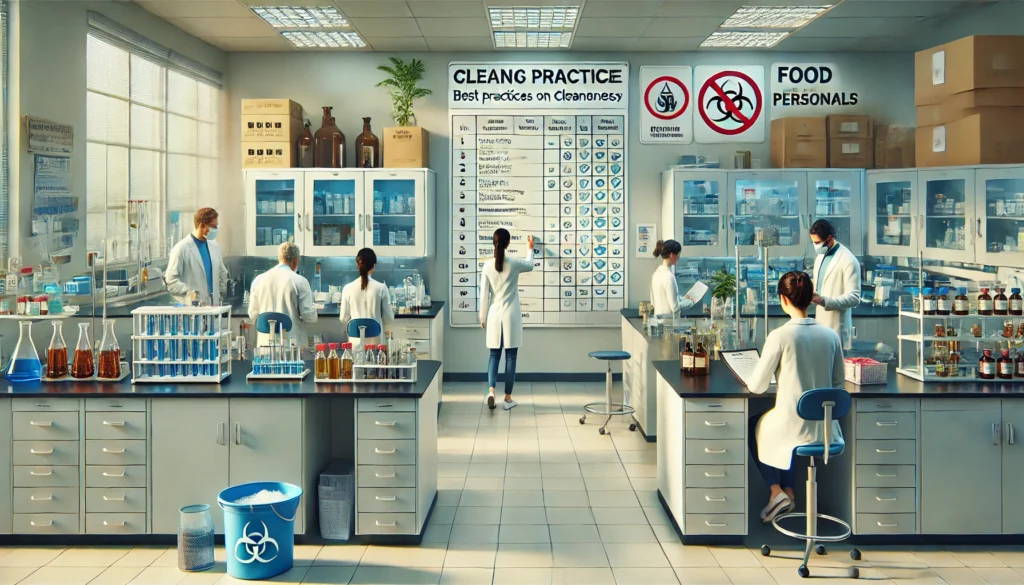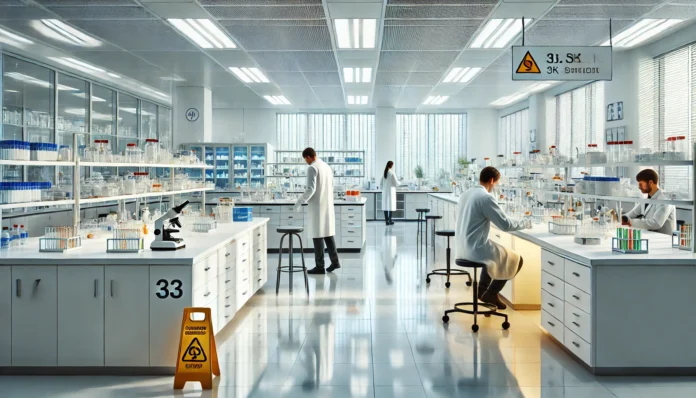Keeping lab clean is not just about good habits—it is a crucial requirement for safety, efficiency, and accuracy. Those working with chemicals, biological samples, or delicate equipment must prioritize cleanliness, as it not only ensures a tidy space but also helps prevent accidents and maintain compliance with industry regulations. A well-organized workspace is essential for the health of researchers and employees while also boosting laboratory productivity by providing a clear and efficient working environment. Throughout this piece, we will explore essential strategies for keeping lab clean, including regular maintenance routines and best operational practices.
Why Keeping Lab Clean is Essential
A lab that is full of dirt is a major source of risk, in particular:
- Safety Hazards – Spilled chemicals, haphazard distribution, and inappropriate shift of waste prove to be a cause of a large number of incidents.
- Cross-Contamination – Dust, chemicals, and other particles interfere with the precision of the results.
- Regulatory Violations – Laboratories need to observe the rules of health and safety protocols according to the exact details, as they are accountable for the health and safety of many people.
- Reduced Efficiency – Chaotic workspaces slow operations and are a factor in lower productivity.
The cleanliness of the laboratory spaces not only benefits the health of others, in addition to that you are very productive and efficient unlike when the space is dirty.
Daily Cleaning Routine for a Spotless Lab
The most efficient and convenient way to ensure the work area lives up to expectations is to remember to clean it every day through good practice habits.
Wipe Down Surfaces Regularly
Maintenance of cleaning equipment by dusting of work surfaces, PureSpill stations, and adjoining stations, etc., using disinfection paper or other alcohol-based professional cleaning agents twice a day, in the morning and evening is the best way to get rid of dust.
Dispose of Waste Properly
- Differentiate between the hazardous and non-hazardous waste.
- Disposal of chemical and biological wastes should be done in the bins to be used for such items.
- Make sure to take the trash out every day to prevent accumulation.
Keep Floors and Walkways Clear
Put the unnecessary items out of the way, clean the spill immediately and place the cords and tools in the right areas so that no one can trip or slip.

Also Read: Will the Police Unlock Your Car? Here’s What You Need to Know
Weekly and Monthly Cleaning Tasks
One of the most important things to always do when it comes to cleaning is the ability to perform some of the tasks of the house only once a week or a month so that one can properly clean the home and it can also maintain the home in good shape.
Deep Clean Equipment
- Sterilize and disinfect the glasswares and other related equipment.
- Biomedical safety biosafety cabinets and natural or mechanical fume hoods should be decontaminated.
- Moreover, keep the air vents clean and check the filter once or twice a year and on top of all that change the water of the air-conditioner as regularly as scheduled.
Organize Storage Areas
- Take the disposal materials and deposit them in a trash bin that is far from the house then walk them manually to a distant place.
- Store the items with their respective names and labels and arrange the exposition of the items on the wall in such a way that the substances can be easily located.
- Make things like the keys, bill turn-over, wallet, purse, toy, home, and others accessible to your friend by bringing them to him or her who likes to use them very often.
Inspect and Maintain Safety Equipment
Make sure to check fire extinguishers, safety stations, and emergency showers that are the first aid stations to confirm if they are in proper working condition and are well maintained.
Best Practices for Keeping Lab Clean
In this guide, we’ll provide the ways of keeping the lab clean by following the below mentioned best practices.

Establish a Cleaning Schedule
Do it so that each member of the lab can get the assigned duty and write it down as it is done from the list.
Store Chemicals and Equipment Properly
Set them apart in the right sections clearly labelled and marked so that they could not be lost or consumed due to error.
Educate Lab Personnel
Stay in your tough cleaning and acting like a boss will not work; staff should also be motivated and appreciated. Workshops and classes taken inside the lab are most effective.
Limit Food and Personal Items
Refusal of entry of food, drinks, and personal items in the laboratory will reduce the chances of getting the area contaminated.
Final Thoughts
Keeping lab clean is not just about appearance—it is essential for safety, efficiency, and compliance with regulations. By following a predetermined cleaning schedule and maintaining good lab hygiene, researchers can ensure that the lab remains a safe and high-performing environment. With proper cleanliness practices, the lab becomes a well-organized space for quality research, operating at maximum efficiency.
Beginning today, take up the habit of light cleaning as a few of your lab experiments on a daily basis. A clean, well-maintained laboratory ameliorates the hazards and augments productivity which states that cleanliness is the top priority that is adhered to by every laboratory technician.
Also Read: Power of Communication Skills in Mental Health: Why Words Matter


